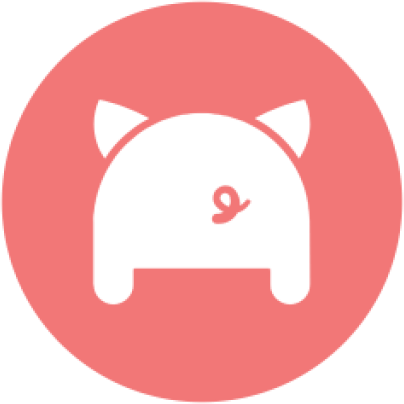
Over the last 12+ years, I’ve designed (or redesigned) hundreds of websites. That includes the initial brainstorming, sketching, wireframing, designing, and developing/coding.
It can be a long, sometimes difficult process.
But no site is ever as hard as your very first one.
Actually, tackling the challenge of designing your first website can be a bit daunting if you’ve never done it before.
Add to that the fact that technology options and code languages are constantly changing and the idea that you have to constantly maintain that site can just put your anxiety over the top.
Luckily, learning web design with the current state of the Internet is far more simple. I recommend you give it a try. Here are a few critical pieces of advice to get you started:
1. Get the right domain and host
You’re going to save yourself A LOT of headache if you begin your journey on the right foot by selecting the right domain and web host.
Here at Porkbun, not only can you find the perfect domain name, but you can also use our super-simple hosting to build your WordPress site, HTML-coded site, or just about anything else.
We’ve even got a website builder if you have absolutely no idea where to start. Plus, managing your domain and your hosting all in the same place makes everything infinitely easier.
2. Consider hiring a freelancer
While designing your first website from scratch may seem incredibly exciting, there’s no doubt it will take a lot of time and devotion.
If you’re short on time, patience, or the general passion required to learn the intricacies of web design, you may want to consider hiring a developer for the job.
For affordable, quality freelance web developers, you can visit sites like Upwork, where you can post your web design project and get connected with dozens of freelance developers within 24 hours or less.
That’ll free you up to do all the things you need to for your business to run smoothly—instead of forcing you through late-night code sessions.
2. Use a simple tool (aka: avoid code at first)
If you insist on doing it yourself (that’s ok too), then we recommend you at least get ahead of the curve by using a simple drag-and-drop tool to get your feet wet.
Site-builders like Weebly (free for anyone using Porkbun hosting) offer excellent (and easy) drag-and-drop design options that let you get your site looking nearly perfect without ever writing a single line of code yourself. Weebly’s ease of use is one of many reasons why it’s one of the best site builders on the market today.
Once you’ve got your site online, you can go back and begin to slowly learn HTML, CSS, Javascript, or other languages if you have a desire to eventually code a website yourself.
3. Keep it very simple at first
One of the most common mistakes people make when designing their first website is trying to include every little feature they can in their first version.
That means they spend hours, days, weeks, months trying to figure out how to do this or that and often they never get their first website up in the end.
Instead, keep it simple.
Many sites only have one long, results-focused page (more on that later). They work just fine. One page, no headaches.
Other sites keep it very simple with less than 10 pages—which is what I recommend as you build your first site. Consider adding only the most important pages to get started: home page, about page, contact page, etc.
4. Focus on results
Keeping things simple will also allow you to focus on the results you’re trying to get from your site.
Each page on the site should ultimately point toward the goal you’re trying to achieve—be it email signups, ad clicks, or e-commerce purchases.
It can be extremely easy to get caught in the weeds when it comes to building your first website. But focusing on results can help you quickly answer the question, “Do I really need this on my site?”
5. Iterate soon
Finally, be prepared to iterate—and quickly. The first version of your site is not going to be perfect.
This is actually a good thing.
Knowing that you’ll quickly come back to optimize or improve certain elements of your site helps you hit “publish” much more quickly on your first version.
After getting completely online, install some sort of analytical data tool to see who’s visiting your site, what pages they’re on, how long they’re on the site, etc.
This will help you make future decisions about what to add, change, remove or edit on your website.
Most of all, have fun!
I’ve been designing websites for a long time. And every time I start over on a new project I get really excited about the possibilities. Web design is fun—and it should stay that way.
Don’t get bogged down with all the technicalities. Have fun with it.
Happy website building!
Preston Lee is the founder of Millo, where he and his team help people leverage their skills through a side-hustle, business blog, or freelance career. Read their blog for freelancers here.
